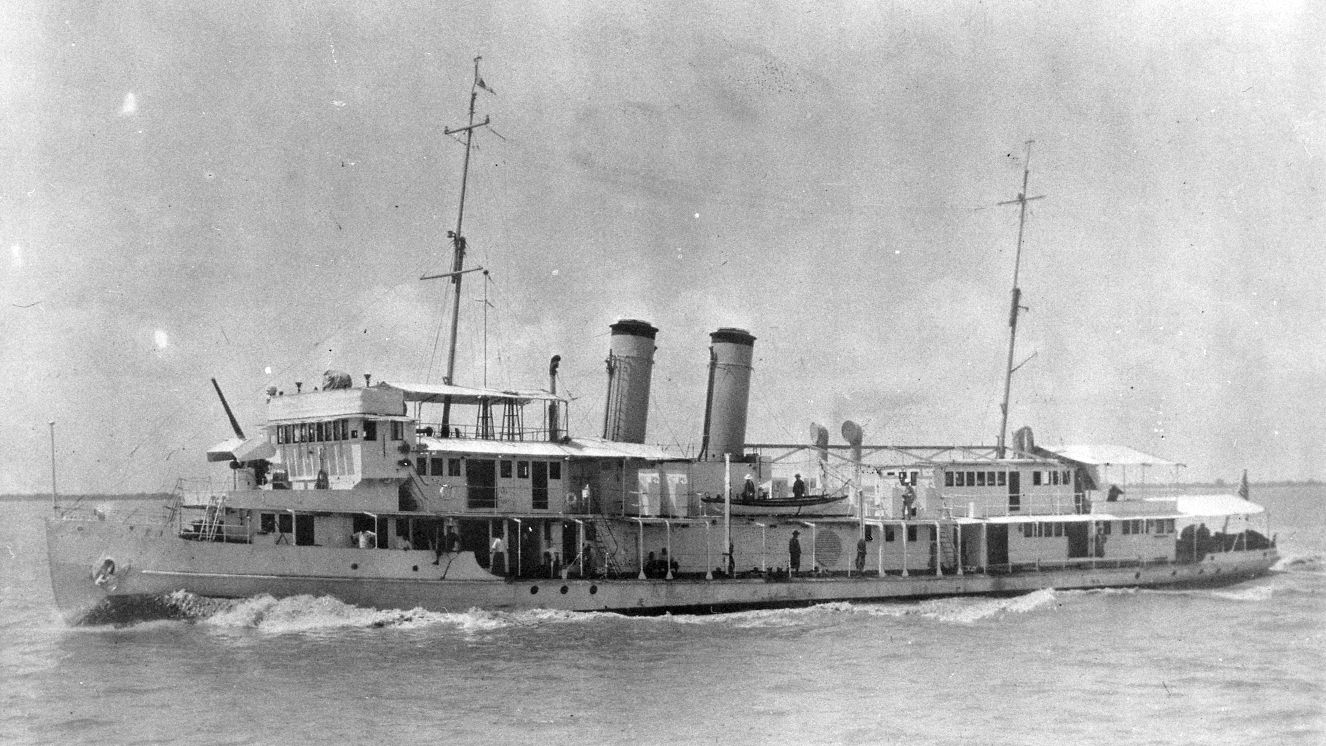HOW THE HIGGINS BOAT HELPED END WWII

Closely associated with the Allied Invasion of Normandy, the Higgins boat is one of the most recognizable boats of WWII. Also known as the Landing Craft, Vehicle, Personnel (LCVP) and the Eureka boat, it played an integral role in the liberation of Europe. These boats enabled troops to land on open beaches, which fundamentally shaped General Dwight D. Eisenhower’s war strategy. Popularized through the photograph Into the Jaws of Death (1944), which showed fearless U.S. Army soldiers jumping out of a Higgins boat into the water surrounding Omaha Beach, Andrew Higgins soon became a household name. Read on to find out how his boats single-handedly changed how war was fought.
Who Invented the Higgins Boat?
Andrew Higgins was a boat builder from New Orleans. His most widely known invention was the Landing Craft, Vehicle, Personnel, also known as the Higgins boat, which was used to transport troops to the beaches of Normandy. In the 1930s, Higgins developed the Eureka — a fast, easy-to-maneuver, flat-bottomed boat unmatched in performance. Due to this reputation, the U.S. Navy soon contacted Higgins Industries about developing a unique landing craft for the military. The Eureka underwent two evolutions, including the Landing Craft Personnel (Large) (LCP) (L) and the Landing Craft Vehicle (LCV), which included a ramp. Since both designs had desirable features and functions, Higgins decided to combine both models, creating the LCVP. This soon became the most ambitious amphibious landing boat available due to its ability to deliver mass quantities of troops and equipment to shore without the need for harbors. Given this revolution in warfare tactics, Dwight D. Eisenhower credited Higgins as “the man who won World War II.” Higgins also held 30 other patents, was awarded an honorary Doctor of Laws degree from Creighton University, and had a fleet oiler named in his honor: USNS Andrew J. Higgins. Read next:Kilroy Was Here: The Infamous WWII Meme That Lives On
What Did the Higgins Boat Look Like?
Since function determines structure, it has been said that Andrew Higgins originally designed these boats for smugglers and bootleggers who needed vessels that were sturdy in shallow water and able to reach the beach quickly. The end of Prohibition, however, left Higgins without a target market for his invention. Looking for new buyers, Higgins discovered that the Navy was dissatisfied with the design of its landing boats. Their current boats lacked a ramp. This made disembarking difficult and unsafe, requiring troops to jump over the sides, exposing them to gunfire. Tasked with inventing a boat that allowed soldiers to disembark quickly, the design came to fruition. The Higgins boat was 36 feet long with a beam length of around 11 feet. It was powered by a 225-horsepower diesel engine and reached a speed of 14 miles per hour. The Higgins boat could carry approximately 8,000 pounds! This provided enough room for about thirty-six fully armed troops while still leaving space for 6,000 pounds of vehicle/equipment storage. The Higgins boat, with its pair of .30 caliber Browning machine guns, was typically operated by a crew of four to 12 men. The front ramp was made of steel, but the sides were made of laminated plywood. This wooden construction made the boat light enough for shallow areas and low water lines. This allowed troops to be in close proximity to the shore, making unloading personnel or supplies easier and more efficient.
Why Was the Higgins Boat Important?
Simply put, it changed how war was fought. The introduction of LCVPs made large-scale invasions at sea easier, as armies could be released at any place on the shoreline while still in motion. Prior to the Higgins boat, WW2 soldiers were forced to attack heavily guarded ports, putting troops directly in the line of fire. The Higgins boats provided more flexibility in choosing points of attack, forcing the enemy to spread out across the shoreline, thus thinning the defensive forces. The Higgins boats gave U.S. amphibious commanders a tactical advantage during WWII. Let’s talk numbers: How many Higgins boats were used on D-Day? 1,500! How many Higgins boats were built? By the time the war ended, more than 20,000! These boats not only played a crucial role in ending World War II, but their success made Higgins Industries a flagship force during the war. Higgins Industries became one of the largest employers during WWII, stimulating the economy.
Higgins Boats Today
The few Higgins boats that did survive the war have been restored. These original boats can be seen in the National WWII Museum in the United States and in England at the D-Day Museum. With very few boats left, those seen in movies and other museums around the world are often fiberglass replicas. There is no doubt that each and every Higgins boat has had a lasting impact. They will be remembered as the boats that helped end WWII. Related read:10 Times Antiques Roadshow Proved WW2 Art is the Bomb (2022 Edition)
Image: dhvstockphoto - stock.adobe.com
BY LAUREN PIETTE
Editor at VeteranLife
Lauren Piette is a content strategist and editor at Military Brands, where she curates and polishes storytelling that informs, supports, and empowers the military community. With experience across digital content publication, SEO-driven content creation, and audience engagement, she blends strategic...
Credentials
Expertise
Lauren Piette is a content strategist and editor at Military Brands, where she curates and polishes storytelling that informs, supports, and empowers the military community. With experience across digital content publication, SEO-driven content creation, and audience engagement, she blends strategic...



